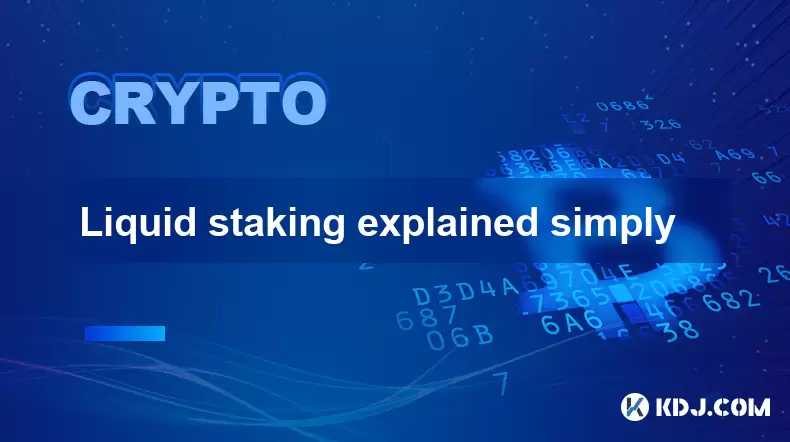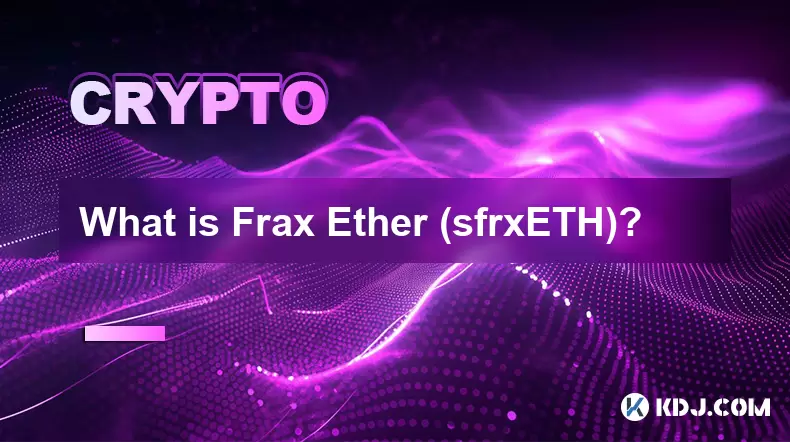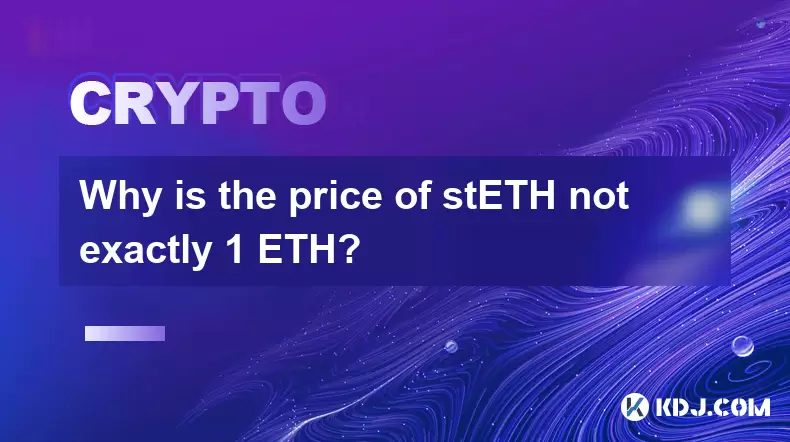-
 Bitcoin
Bitcoin $118300
-1.72% -
 Ethereum
Ethereum $3591
-0.69% -
 XRP
XRP $3.478
-3.53% -
 Tether USDt
Tether USDt $1.001
-0.01% -
 BNB
BNB $737.7
-0.54% -
 Solana
Solana $177.3
-2.40% -
 USDC
USDC $0.9999
-0.01% -
 Dogecoin
Dogecoin $0.2538
7.04% -
 TRON
TRON $0.3256
-0.85% -
 Cardano
Cardano $0.8332
-3.48% -
 Hyperliquid
Hyperliquid $44.80
-3.30% -
 Stellar
Stellar $0.4672
-6.09% -
 Sui
Sui $3.828
-5.98% -
 Chainlink
Chainlink $18.15
-3.41% -
 Hedera
Hedera $0.2655
-7.16% -
 Bitcoin Cash
Bitcoin Cash $517.5
-0.64% -
 Avalanche
Avalanche $23.89
-2.37% -
 Shiba Inu
Shiba Inu $0.00001519
-0.45% -
 UNUS SED LEO
UNUS SED LEO $8.973
0.13% -
 Toncoin
Toncoin $3.211
-2.54% -
 Litecoin
Litecoin $103.5
-3.58% -
 Polkadot
Polkadot $4.313
-3.90% -
 Uniswap
Uniswap $10.31
0.67% -
 Monero
Monero $325.4
-2.88% -
 Bitget Token
Bitget Token $5.049
3.51% -
 Ethena USDe
Ethena USDe $1.002
0.04% -
 Pepe
Pepe $0.00001346
-2.96% -
 Dai
Dai $0.9999
-0.02% -
 Aave
Aave $322.1
-2.93% -
 Bittensor
Bittensor $411.9
-4.70%
Liquid staking explained simply
Liquid staking lets users earn rewards by staking crypto assets while maintaining liquidity through tokenized receipts that can be traded or used in DeFi apps.
Jul 19, 2025 at 06:28 am

What Is Liquid Staking?
Liquid staking is a concept in the blockchain and cryptocurrency space that allows users to stake their assets without locking them up. Traditional staking involves depositing tokens into a network to support its operations, but it often requires those tokens to be unavailable for other uses during the staking period. Liquid staking introduces a solution to this limitation by issuing tokenized representations of staked assets.
When a user engages in liquid staking, they deposit their cryptocurrency into a staking pool or protocol. In return, they receive liquid tokens that represent their staked assets plus any accrued rewards. These tokens can be freely traded, used in decentralized finance (DeFi) protocols, or even re-staked elsewhere. This method enhances liquidity and flexibility for token holders while still contributing to network security.
How Does Liquid Staking Work?
The process of liquid staking typically involves several key steps:
- Deposit tokens into a liquid staking platform or protocol.
- The platform then stakes those tokens on the user's behalf in the underlying blockchain network.
- In return, the user receives liquid staking tokens, often referred to as receipt tokens.
- These receipt tokens can be used in various DeFi applications, such as lending platforms or decentralized exchanges.
- Staking rewards are either automatically compounded or distributed periodically to the user’s wallet.
This system allows users to earn staking rewards while maintaining the ability to use their assets in other financial activities. It is particularly popular on Proof-of-Stake (PoS) blockchains like Ethereum 2.0, Cosmos, and Solana.
Benefits of Liquid Staking
Liquid staking offers several compelling advantages over traditional staking methods. One of the most significant benefits is capital efficiency. Instead of locking up assets, users can continue to deploy them in yield-generating strategies across DeFi platforms.
Another benefit is reduced risk of slashing. Some liquid staking providers pool assets from multiple users and distribute the risk, which can help mitigate individual losses in case of validator misbehavior or penalties.
Additionally, liquid staking improves accessibility for smaller investors. Users who might not meet the minimum staking requirements of a network can still participate through liquid staking derivatives, allowing them to benefit from staking rewards without the technical overhead.
Popular Liquid Staking Platforms
Several platforms have emerged as leaders in the liquid staking space. Each offers a slightly different approach to tokenizing staked assets and integrating with DeFi ecosystems.
- Lido Finance is one of the most well-known platforms, primarily focused on Ethereum. It allows users to stake ETH and receive stETH, a token that represents their staked ETH and rewards.
- Rocket Pool is another Ethereum-focused option that offers a decentralized alternative to centralized staking services.
- Stakehound was an early entrant in the ETH 2.0 liquid staking market, though it has faced scrutiny over centralization concerns.
- Binance Liquid Staking provides a custodial option where users can stake various PoS coins and receive liquid tokens in return.
Each platform has its own fee structure, reward distribution method, and tokenomics, so users should evaluate them carefully before choosing one.
Security and Risks Involved
While liquid staking offers many benefits, it also comes with certain risks and trade-offs that users should be aware of. One of the primary concerns is smart contract risk. Since liquid staking relies on third-party protocols, any vulnerabilities in the code could lead to loss of funds.
Another risk is centralization. Some liquid staking platforms operate with a centralized infrastructure, which goes against the decentralized ethos of blockchain technology. This centralization can result in governance issues or even regulatory scrutiny.
Slashing penalties are another important consideration. If a validator managed by the liquid staking provider misbehaves or goes offline, users may suffer reduced returns or losses. While many platforms spread this risk across users, it is still a factor to consider.
Lastly, market risk is present due to the fluctuating value of liquid staking tokens. For example, stETH has experienced depegging events, where its value temporarily diverges from the underlying ETH due to market conditions or liquidity issues.
Frequently Asked Questions
Q: Can I unstake my tokens at any time with liquid staking?
A: While liquid staking provides liquidity through receipt tokens, unstaking the original tokens may require going through an unbonding period, depending on the underlying blockchain. Some platforms offer instant unstaking features, but they may charge a fee or offer a lower yield in return.
Q: Are liquid staking tokens tradable on all exchanges?
A: Not all exchanges support liquid staking tokens. Some major exchanges like Binance and Coinbase have started listing popular ones like stETH, but many DeFi-native tokens may only be traded on decentralized exchanges (DEXs).
Q: How are staking rewards distributed in liquid staking?
A: Rewards are typically reflected in the value appreciation of the receipt token. For example, stETH increases in value over time as ETH staking rewards are accrued. Some platforms may also offer direct reward distributions to wallets, depending on their design.
Q: Is liquid staking suitable for beginners?
A: Yes, but with caution. Liquid staking simplifies the process of earning rewards and participating in DeFi. However, users should understand the risks involved, especially related to smart contracts and token volatility, before committing funds.
Disclaimer:info@kdj.com
The information provided is not trading advice. kdj.com does not assume any responsibility for any investments made based on the information provided in this article. Cryptocurrencies are highly volatile and it is highly recommended that you invest with caution after thorough research!
If you believe that the content used on this website infringes your copyright, please contact us immediately (info@kdj.com) and we will delete it promptly.
- Crypto Market Mania: Ethereum Surges, Trump's Company Cashes In!
- 2025-07-19 12:30:13
- NFT Trading, Users, and the Quest for a Comeback: What's the Deal?
- 2025-07-19 12:30:13
- Baby Sex: Unpacking the Influencing Factors and Birth Sex Trends
- 2025-07-19 12:50:13
- Satoshi Nakamoto, Bitcoin, and Bill Gates: A New World Order?
- 2025-07-19 13:15:12
- Trump's GENIUS Act: A New Era for Stablecoin Regulation?
- 2025-07-19 12:50:13
- Render Crypto, DePIN, and GPU Rendering: The Future is Now, Baby!
- 2025-07-19 12:55:13
Related knowledge

What happens to my rewards in liquid staking?
Jul 19,2025 at 12:21pm
Understanding Liquid Staking and Its MechanicsLiquid staking is a mechanism in the cryptocurrency ecosystem that allows users to stake their tokens wh...

What is Frax Ether (sfrxETH)?
Jul 19,2025 at 10:08am
Understanding Frax Ether (sfrxETH)Frax Ether (sfrxETH) is a derivative token within the Frax Finance ecosystem, which is a decentralized finance (DeFi...

Why is the price of stETH not exactly 1 ETH?
Jul 19,2025 at 11:56am
Understanding the stETH and ETH RelationshipstETH (staked ETH) is a token issued by Lido Finance, representing the user's share of staked ETH on the E...

Where to buy liquid staking tokens?
Jul 19,2025 at 01:01pm
What Are Liquid Staking Tokens?Liquid staking tokens are a type of cryptocurrency asset that allows users to stake their native blockchain tokens whil...

What is the future of liquid staking?
Jul 19,2025 at 02:49am
Understanding the Concept of Liquid StakingLiquid staking refers to a mechanism that allows users to stake their cryptocurrencies while still retainin...

Liquid staking explained simply
Jul 19,2025 at 06:28am
What Is Liquid Staking?Liquid staking is a concept in the blockchain and cryptocurrency space that allows users to stake their assets without locking ...

What happens to my rewards in liquid staking?
Jul 19,2025 at 12:21pm
Understanding Liquid Staking and Its MechanicsLiquid staking is a mechanism in the cryptocurrency ecosystem that allows users to stake their tokens wh...

What is Frax Ether (sfrxETH)?
Jul 19,2025 at 10:08am
Understanding Frax Ether (sfrxETH)Frax Ether (sfrxETH) is a derivative token within the Frax Finance ecosystem, which is a decentralized finance (DeFi...

Why is the price of stETH not exactly 1 ETH?
Jul 19,2025 at 11:56am
Understanding the stETH and ETH RelationshipstETH (staked ETH) is a token issued by Lido Finance, representing the user's share of staked ETH on the E...

Where to buy liquid staking tokens?
Jul 19,2025 at 01:01pm
What Are Liquid Staking Tokens?Liquid staking tokens are a type of cryptocurrency asset that allows users to stake their native blockchain tokens whil...

What is the future of liquid staking?
Jul 19,2025 at 02:49am
Understanding the Concept of Liquid StakingLiquid staking refers to a mechanism that allows users to stake their cryptocurrencies while still retainin...

Liquid staking explained simply
Jul 19,2025 at 06:28am
What Is Liquid Staking?Liquid staking is a concept in the blockchain and cryptocurrency space that allows users to stake their assets without locking ...
See all articles

























































































